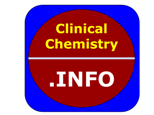Clin Chem Lab Med. 2025 Oct 9. doi: 10.1515/cclm-2025-1129. Online ahead of print.
ABSTRACT
OBJECTIVES: To compare the diagnostic performances of GFAP and UCH-L1 with S100B in detecting intracranial injury, while investigating the impact of confounding factors.
METHODS: In a large prospective cohort of 1,010 patients with mild traumatic brain injury, we first evaluated the clinical performances of S100B and the GFAP/UCH-L1 combination. To explore the impact of pre-analytical interferences on GFAP and UCH-L1 levels, HIL indices (hemolysis, icterus, lipemia) were measured using the Atellica® analyzer, and spiking experiments were performed with increasing concentrations of hemolysate, bilirubin, and Intralipid®. We then assessed the influence of four confounders on biomarker specificity: age over 80 years, hemolysis, neurodegenerative diseases, and extracranial fractures. Finally, we evaluated the ability of the biomarkers to predict clinical outcomes at one month.
RESULTS: S100B and the GFAP/UCH-L1 combination showed sensitivities of 96 and 100 %, and specificities of 25 and 27 %, respectively. False positives were significantly associated with age >80 and extracranial fractures for S100B; with age >80 and neurodegenerative diseases for GFAP; and with age >80, hemolysis, and extracranial fractures for UCH-L1. UCH-L1 levels were markedly increased by hemolysis, starting at 400 mg/L of hemoglobin. Age was the only confounding factor to significantly affect specificity. Using age-adjusted thresholds in patients over 80 increased specificity to 30 % for S100B and 33 % for GFAP/UCH-L1. Overall, the biomarkers exhibited limited predictive value and performed poorly for one-month clinical outcomes.
CONCLUSIONS: S100B and the GFAP/UCH-L1 combination demonstrated very high sensitivities, close to 100 %, with specificities of approximately 30 % for the diagnosis of intracranial lesions. Age-adjusted thresholds improve specificity in older patients, supporting their clinical implementation. This study also provides the first evidence that hemolysis significantly elevates UCH-L1 concentrations from 400 mg/L of hemoglobin.
PMID:41060705 | DOI:10.1515/cclm-2025-1129
